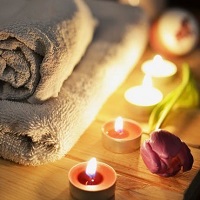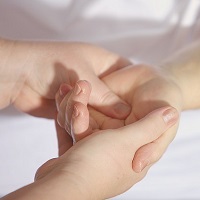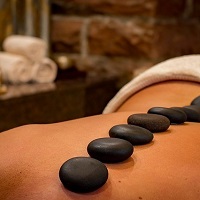 It’s a common misconception that reflexology and massage are pretty much the same, but although there are similarities between them, they are in fact completely different practices. So what is the difference between reflexology and massage? We will come to that shortly, but first to understand which aspects of the two therapies are alike.
It’s a common misconception that reflexology and massage are pretty much the same, but although there are similarities between them, they are in fact completely different practices. So what is the difference between reflexology and massage? We will come to that shortly, but first to understand which aspects of the two therapies are alike.
Similarities Between Reflexology and Massage
Both therapies can be extremely relaxing and are an excellent way of relieving pain and stress. Blood and lymph circulation can be improved by reflexology and massage as a result of physical stimulation. However, with reflexology this is due to stimulation of particular reflex points as opposed to rubbing or kneading of a general area, as is the case with massage.
Both reflexology and massage are unregulated in the U.K., but it’s considered good practice for therapists to belong to a representative or governing body. Examples of these are The Complementary and Natural Healthcare Council (www.cnhc.org.uk), or more specifically the Association of Reflexologists (www.aor.org.uk), or the General Council for Massage Therapy (www.gcmt.org.uk). See the Directory Page for further contacts.
Belonging to these such organisations will mean that the therapist has relevant qualifications and experience, has a strategy in place for C.P.D., (continued professional development), and is able to get insurance cover in order to practice – obviously this is important and useful to know when you are looking for a therapist.
Generally in the U.K., reflexologists and massage therapists will be expected to complete relevant training for a minimum period of 6 months full-time or 12 months part-time, with course hours totalling at least 200. As part of the training and qualification process there will be written exams and practical assessments.
The requirement for practical experience differs with awarding bodies; some require 6 months of ongoing experience whereas others deem the treatment of at least 15 people as an acceptable benchmark to demonstrate capability. Courses for both disciplines cover anatomy (bodily structure) and physiology (bodily functions). In addition reflexologists study pathology (the cause and effect of disease).
These training guidelines apply to the U.K., but regulations and expectations vary considerable globally. For example, in Russia only qualified doctors may perform reflexology. In the United States the licensing laws for massage therapy vary from state to state. If you are thinking of becoming a therapist or are considering treatment, check what applies locally to you.
Differences Between Reflexology and Massage
 One of the main differences between reflexology and massage is that with reflexology, the body is mapped in relation to reflex points. Therapists will only make contact with small areas such as the hands, and use very small and precise finger, thumb and hand movements in order to stimulate nerve endings in a particular area. (There are over 7000 nerve endings in each foot,)
One of the main differences between reflexology and massage is that with reflexology, the body is mapped in relation to reflex points. Therapists will only make contact with small areas such as the hands, and use very small and precise finger, thumb and hand movements in order to stimulate nerve endings in a particular area. (There are over 7000 nerve endings in each foot,)
There are different types of reflexology (foot, hand, face, outer ear), and within these types are differing methods of practice, but essentially all types of reflexology are based on the theory of reflex points and how they correspond with particular parts of the body.
Although a reflexology treatment concentrates on the reflex zones situated on the outside of the body, the treatment itself is for the benefit of internal organs and systems. The aim of treatment is to stimulate the body’s own healing system, thereby balancing all areas of the body and bodily systems, rather than just concentrating on the back for example. as a massage may do.
In a reflexology session, only shoes and socks need to be removed if having a foot treatment. (Or jewellery etc. for ear, face or hand.) For a massage session, clothes will need to be removed accordingly, depending on the location of the massage.
Massage therapy techniques generally include much larger, sweeping movements than reflexology as the therapist will be concentrating on (large) areas of soft tissue, such as muscles, tendons and connective tissue. They will directly manipulate the areas requiring attention with the aim of relieving tension and pain (as well as improved circulation.)
Reflexology and Massage – Holistic or Non-Holistic?
Reflexology comes under the holistic healing banner, and is believed to improve the flow of our life force energy, (also known as ki, chi or prana), thereby creating balance in body, mind, spirit and the emotions. However, there are those who consider reflexology and it’s benefits in purely physical terms such as increased blood flow and the relief of physical pain.
 Likewise, massage can be considered and practiced in purely physical terms, for example hot stone massage, Swedish massage or Swiss reflex massage – which yes, you guessed it, follows the principles of reflexology! However, there are many types of massage which come under the holistic approach to healing, specifically with the aim to treat the person as a whole and not just physically. Examples are aromatherapy massage, shiatsu and acupressure massage.
Likewise, massage can be considered and practiced in purely physical terms, for example hot stone massage, Swedish massage or Swiss reflex massage – which yes, you guessed it, follows the principles of reflexology! However, there are many types of massage which come under the holistic approach to healing, specifically with the aim to treat the person as a whole and not just physically. Examples are aromatherapy massage, shiatsu and acupressure massage.
On the most basic of levels, both reflexology and massage can be extremely calming, reducing stress and tension as a result of physical contact, and with the aim of improving our physical health. But by relieving stress and tension, we become calmer mentally, emotionally and therefore spiritually. So, whether reflexology and massage are labelled as holistic or not, the outcome is of benefit to our overall health, not just our physical body.
Reflexology vs. Massage – What Will You Choose?
If you are wondering whether to have reflexology or massage, this is a very personal choice and will depend on your reasons for considering a treatment. Do you have a sports injury which would benefit from direct manipulation, or do you feel the need for balance and a boost to your general wellbeing for example? Both reflexology and massage are excellent methods of preventive care and a fabulous way of pampering. Many therapists are multi-disciplined so you may get the opportunity to experience both in one session.
All good therapists will welcome your questions and will normally consult with you as a matter of course before your first session with them. As always, check with your doctor before you embark on any course of treatment, especially if you have a known health issue – reflexology and massage may not be suitable for certain conditions.
However, there are massive benefits to be had from either therapy, so I hope you’re able to take the opportunity to experience one or the other (or both) if you can. Please leave any comments or questions below.
To find out more about reflexology, see Reflexology Healing – Before, During and After A Session.




